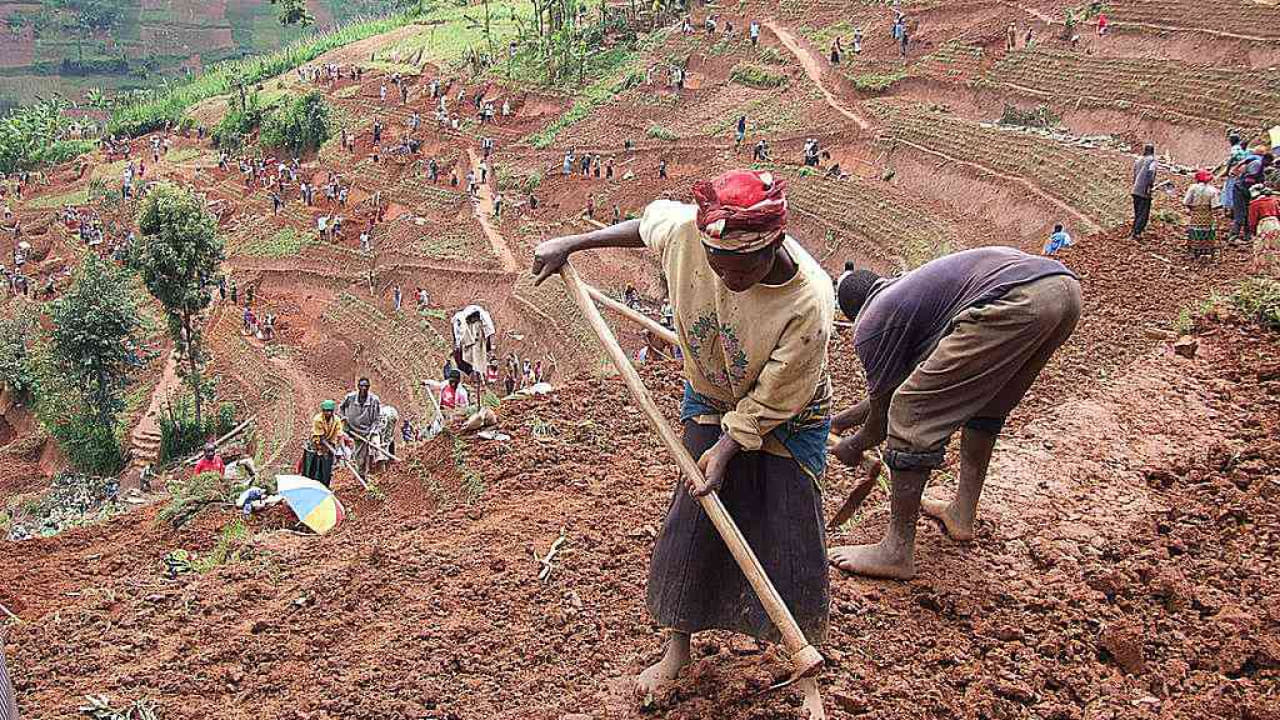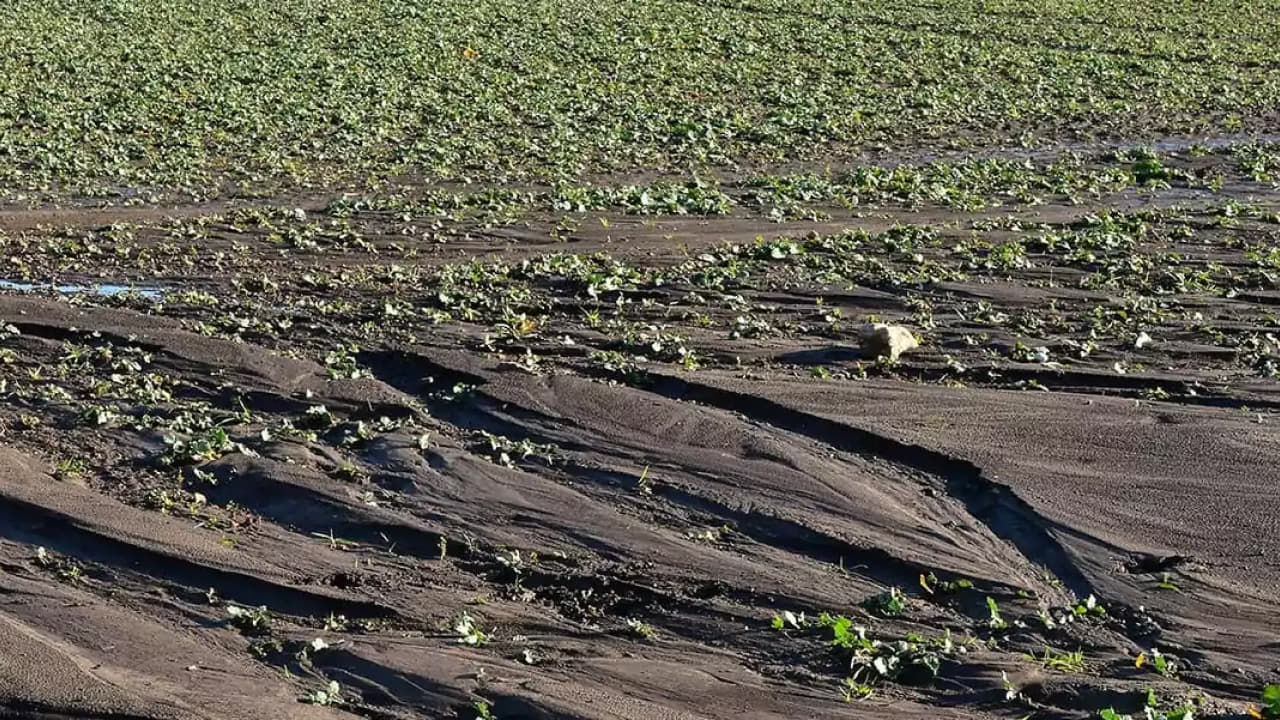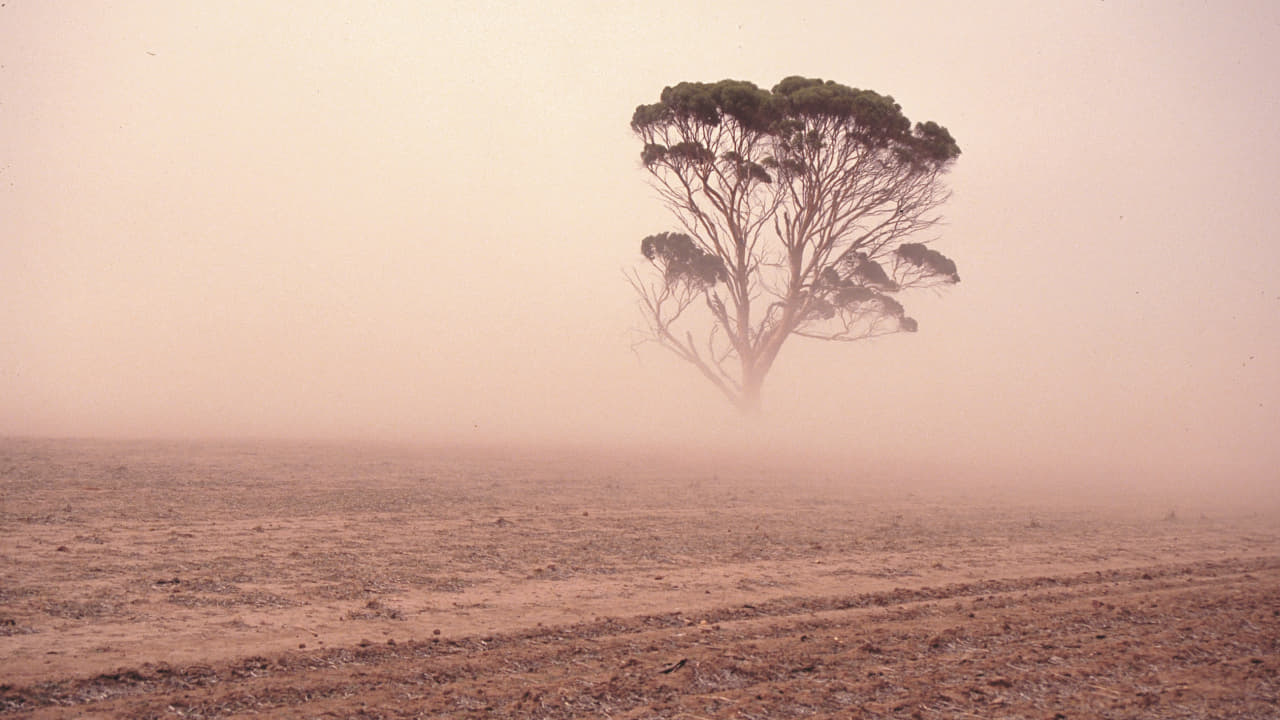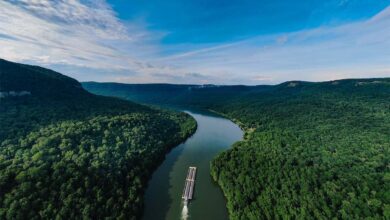Understanding Soil Erosion: The Hidden Danger to the Environment
Soil erosion is apparently silent, gradually reshaping our landscapes and threatening the very foundation of life on Earth. It may seem like a natural process, in fact, it’s a growing concern as human activities accelerate the impact.
Fertile land is being stripped away, inch b inch, leaving behind barren fields and disrupted ecosystem. The deforestations caused by land depletion is increasing rapidly over the time.
Table of Contents
Understanding soil depletion isn’t just about preserving the earth beneath our feet. It’s about safeguarding our future by contemplating to resolve the causes of deforestation.
What is Erosion?

Erosion is one of the natural processes on the earth which take soil particles away from the top layer of the earth’s surface. It shifts from one place to another with the help of heavy natural forces like the wind or the ultimate flow of water.
What is Soil Erosion?
The process by which the top soil layer is lost due to environmental factors or natural forces is known as soil erosion. In particular, there is a role for wind, water, human activities like deforestation and agriculture. Plant development depends on the top layer, which is rich in nutrients.
Degradation that occurs gradually may result in disturbed ecosystems, less productive agriculture, and the loss of fertile land. It raises a serious environmental concern that has an impact on the land and the communities that live there.
Types of Land Degradation
Erosion consists of other faces of natural consequences that leave impacts on the earth with several factors. It majorly includes water and wind erosion;
Water Erosion

Water Erosion refers to the naturally occurring process of soil transportation with the settlement of particles in water and moving to another way with the same flow of water. It happens due to the increasing rate of human activities like agriculture expansion, deforestation or urbanization.
Forms of Water Wear
There are numerous forms of water erosion, like sheet erosion, rill erosion, gully erosion, and streambank erosion. Sheet erosion means the erosion of the soil from a large part in the form of sheets. It happens because of slopes and leaves sheet erosion on land because of raindrops.
Rill erosion means the erosion of soil takes place in channels that are about one foot deep and concentrated with soil’s runoff.
Gully erosion means the immense effect of soil erosion, which exists in larger than rill erosion. It is much deeper than the rill erosion, and sometimes it gets harder to shift to the original position.
Effects of Water Depletion
Water causes several effects like the wastage of topsoil, loss of healthy fertility and other related to agricultural aspects. It causes the lack of aquatic habitat by lessening the rate of soil that is a home for some fish to feel connected to the land. Sometimes, it causes the flood or the loss of biodiversity.
Some factors of Water Erosion
The facts of water erosion relate to the immense rate of raindrops, slopes or other gradient management. Usually, in order to transport soil by its type to their location via natural rain. Water erosion occurs when the raindrops hit the dusty ground and settle down the dust particles. Also, when the soil gets wet with water, it starts to flow to other positions with the flow of water.
Wind Wear

Wind erosion refers to when the wind carries away the soil from one place to another as considered a natural uptake of elemental movement. Mostly, Wind erosion happens due to the texture of the soil or due to the speed of the wind. It transpires when vegetation leaves soil residue on the land and occurs on numerous scales.
It causes the take-off of the soil, a dusty environment known as air pollution, or the loss or other disadvantages of crops during vegetation
Causes of Land Erosion
It occurs due to natural destruction, like deforestation and climatic changes. While it can occur due to human activities like agriculture, urbanization, and mining.
Deforestation: Cleaning of trees from the land gives space for wind or water respectively to become a cause of soil erosion.
Climatic Changes
The ups and downs of climatic changes can increase the influence of weathering on multiple levels, including soil erosion. It might be the heaviest rain, storm, tornado, cyclone, or other reasons that can rate up soil erosion.
- Agriculture: Famers prefer to do field jobs and dedicate their lives to crops and vegetation. But, they cannot control the impact of soil erosion thoroughly.
- Urbanization: Building something on the land for construction and other purposes or urban activities increases the effects of soil erosion. Multiple engineers work on an immense part of the land, creating the reason for the dusty environment or soil erosion.
- Mining: Many people perform digging activities to extract various minerals like palm oil. To utilize them for multiple reasons; the chances of soil erosion occur due to mining and logging activities.
Why is Topsoil Loss a big problem?
Soil erosion leaves various impacts on the ecosystem. It loses soil fertility and decreases the rate of agricultural productivity. It causes water pollution due to the entering of soil particles into the water and contaminating water along with poor soil or insecticides.
Water pathways are disturbed due to the moistening of soil fertility in the rivers. It causes floods and a worse impact on the ecosystem. Animals make soil their habitats mostly, so when they leave their places, soiled homes disappear due to the wind or water and become a part of erosion. The torn plants from the soil vacated the area and added to the impact of soil erosion.
Sometimes, soil erosion causes desertification, where most crops of other food products cannot grow well. It leaves economic crises like the costs of repairing the damaged parts of the land get high. And the government facilitates the nation to meet the amendments of the world.
How to Prevent and Rehab?
Preventing the soil from erosion requires many strategies, treatment methods and recovery steps. Rehabilitation means the recovery of damaged soil to better fertility will increase food productivity through sustainability and proper management.
- Erosion Control Methods and Practices: Working on management or strategies to develop soil fertility requires practical implementation. Like terraces, building fences, or ploughing, which can lessen the malfunction of erosion and its types. Vegetating the land can reduce the rate of soil loss through windbreaks or water and its ratio.
- Use Soil-friendly Agricultural Practices: Soil-friendly Agriculture means to take care of land and crops with proper considerations. Like no heavy conductance of ploughing, simple crop rotation or agroforestry management build up the good elements in the soil for the crop and the vegetation. It results in lower rates of soil erosion or its prevention.
- Offer Incentives for Land Management: Government teams or other NGOs or organizations take action in multiple fields nationally to work on respective issues to bring the resolution to the world. They try to facilitate the farmers, labourers and landowners with suitable expenditures, taxes, funds, or donations. So they can develop better land for a healthy ecosystem.
Importance of Soil Degradation Prevention
Protecting the earth from many cons of soil erosion requires vital measures by humans to bring peace to living organisms. We get food from the natural vegetating process, so there is much importance on fertility concerning soil where farmers take care of it.
People must take care of the global health of animals, plants or humans, which is considered the ecosystem. Protecting food is another safety measure to terminate the imprints of soil wear. The atmospheric environment plays an efficient role in the ecosystem. Dealing with climatic changes and issues leaves several impacts on the ecosystem.
Erosion demands the settlement and recovery steps not to disturb the lifestyle of people, plants or animals. Taking preventive measures to protect fertility, food security, or other climatic changes can deter the land from soil loss by different natural phenomena.
More Preventive Techniques
People protect land by different methods, including ploughing, cropping, mulching or other techniques. Such as putting fences up around the field to protect it from wild animals or other disasters. People related to agricultural fields can protect land from soil erosion. Crop rotation, agroforestry, or ploughland conservation brings good health to the soil and its fertility.
It depends on the societal Governments of the relevant nation to provide and protect the society from resources and the impact of the many natural consequences. They facilitate farmers with living expenses and other things while working on various projects under the supervision of their seniors. Farmers and other helpers must practice to get land under control.
Senior members must maintain the technological methods to restore the security of the land and be able to keep an eye on unwanted things to keep things in control. Government officers also think of the economic upgradation of farmers. These above steps can secure the nation with diverse perspectives of nature and culture.
Climatic Scenario and Soil Wear
The climate keeps its importance to leave respective impacts on the ecosystem. Controlling the weather allows the earth to remain constant in its temperature. People take care of rainfall to protect their soil fertility. They manage to save the land besides taking care of plants or animals.
The other prominent climatic scenario is the increase or decrease of weather events. It can settle down the soil and cause a clean and respirable environment.
Deforestation and Reforestation
The environment gets unclean when people from rural or urban sides cut down the trees for several purposes. On the one hand, deforestation makes the soil disturbs and destroys the layers of soil on the surface of the land. It carries the soil away into the atmosphere with the power of wind or natural causes like water pollution.
Related Pick: Afforestation vs Reforestation: What’s the Difference?
On the other side, reforestation restores the condition of the soil and forest series to avoid soil degradation, which secures the environment. The settling of the raindrops saves the soil from spreading in the air in the particle’s form.
Incident regarding Erosion
In the 1930s, soil erosion took place during the Dust Bowl in the United States that came from the side of Africa. They tried to invent strategies to control the situation, and with the help of teamwork, they reduced the impact of land depletion very well.
In China, it occurs at the rate of deforestation and agricultural events in the Yangtze River, which is still in action, and farmers or labourers are dealing with it there. Ongoing incidences of topsoil depletion occurred in Ethiopia’s Tigray region because of overgrazing and deforestation. They are still struggling to manage the disruption.
The other incident got attention in the Loess Plateau due to the steep slopes developed by farmers for centuries in China. The other ongoing issue in Madagascar happened because of diverse agricultural techniques and common deforestation.
A Mediterranean region where land degradation rose from land cultivation and its development. Agricultural development took place in the Brazilian Amazon, which caused the soil to loss away that is still going on. Overgrazing and deforestation still occur in the Sahel region to cause losing of soil in Africa.
Loads of deforesting processes and poor land management caused land erosion in the Indus River Basin in Pakistan. In Vietnam, topsoil loss became the reason due to dam construction and poor agricultural rates in the Mekong Delta.
Economy and Erosion of Soil
India loses 6.6 billion tons of soil yearly, in which 5.4 million tons of fertilizer got lost for Rs 2.2 billion each year, as reported by Pimentel in 1993.
Costa Rica lost crop value in good nutrients by about 17% and removed the value of livestock products by about 14%. The Philippines had other damages over coral reefs, fisheries, and other diving sites in Bacuit Bay, as reported by Hodson and Dixon in 1988.
Other economic damage occurred in Java, Indonesia, based on on-site erosion that caused the loss in crop productivity. In 1989, it was supposed to be US$320 million per year of erosion on the farms, as reported by Magrath and Arens. The other estimation was about US$340 to 406 million yearly by 0.5%.
Policies and Future Management
The world can turn out better when it is necessary to develop unique tactics to save the earth from diverse consequences. The first policy is to take care of soil health and its recovery procedures, like cropping, crop rotation, and other people’s efforts that can lower the chances of soil loss.
Agroforestry
The second method is contour farming or terrace, which can reduce water erosion and leave the soil ready to be fertile within its time. The ecosystem looks beautiful with the view of trees and woods in the collective form of forests that save the land from various causes. Agroforestry can be beneficial to restore the rainforests and reduce soil erosion.
Land Division
The fifth policy is for the management of the land division to design or craft in such an order to let it protect the rest of the connected regions and further roads or lands. Controlling the waterways refers to creating the passage of water through dams to its further respective routes through the canals, rivers, streams, or greenfield.
Economic Values
Economic values play a vital role in assisting farmers, labourers, or engineers to develop land for healthy vegetation and other food productivity. Technological advancements are provided to the nation in respective regions to break the events of soil erosion.
Awareness/Education
The other recovery of land erosion can happen in society by educating the farmers or other related people about agriculture. Giving them awareness, training, and practices can make them capable of handling the consequences of any sudden consequences.
The supervisors or the senior officers regarding the related field must take a tour of the land, agricultural processes, irrigation, forestry action and other procedures to protect the soil and land. They can monitor the land for day and night to keep things on record and control for safety measurements.
Last but not least, researchers from various countries can have a conversation in detail to investigate and study the problems to solve them and make a healthy ecosystem. Maintaining good sources regarding agroforestry, agriculture, vegetation, and other terms can develop the land better.
Closing Notes
Soil depletion is the worst situation, making the atmosphere unpleasant and unhealthy ecosystem for all animals, plants and humans. It causes several effects and damages the land and other living organisms.
Studying, analyzing, or testing the theory related to the recovery of poor soil requires the respective people’s energy. In order to sustain the properties of soil and to bring the good qualities of soil to the land.
History depicts the events that show the impact and causes of soil erosion. Better practicing, taking care of advanced and modern technology, and assisting farmers with expenditures can secure the lifestyle of people and soil from outdoor and indoor elements.
You Might Like to Read: The Role of Deforestation in Climate Change
